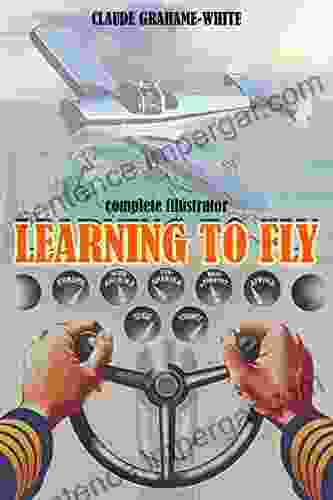Unveiling the Ancient World of Weights and Measures: A Journey Through "Weight Measures In Early Mesopotamia"

4.8 out of 5
| Language | : | English |
| File size | : | 14941 KB |
| Text-to-Speech | : | Enabled |
| Screen Reader | : | Supported |
| Enhanced typesetting | : | Enabled |
| Print length | : | 376 pages |
Welcome to a captivating exploration of the ancient world of weights and measures, as meticulously documented in the groundbreaking work "Weight Measures In Early Mesopotamia: Studies In Ancient Near Eastern Records." This seminal publication unveils the intricate system of measurements and standards that shaped economic and social life in the cradle of civilization, Mesopotamia.
Through rigorous analysis of cuneiform texts and archaeological findings, the authors of this book provide an unprecedented glimpse into the highly sophisticated metrological system that flourished in ancient Mesopotamia. From the earliest Sumerian cities to the later Babylonian empires, we witness the evolution of weights and measures as a vital instrument of trade, commerce, and governance.
The Birth of Metrology in Mesopotamia
The Sumerians, the first known civilization in Mesopotamia, developed a system of weights and measures around 3500 BCE. These early standards were based on natural objects, such as barleycorns, dates, and sheep. As trade and urbanization grew, the need for more precise and standardized measurements became apparent.
By the time of the Akkadian Empire (2334-2154 BCE),a more uniform system of weights and measures had emerged. The basic unit of weight was the shekel, which was divided into smaller units called the mina, talent, and grain. The shekel was also used as a unit of currency, demonstrating the close relationship between economics and metrology.
The Babylonian Legacy
The Babylonians inherited and refined the metrological system developed by the Sumerians and Akkadians. They introduced new units of measurement, such as the sar (a unit of length),and created detailed tables of conversion factors between different units. These tables were essential for trade and commerce, as they allowed merchants and traders to accurately compare prices and quantities.
The Babylonian metrological system was so advanced that it influenced civilizations throughout the ancient world. The Greeks, Romans, and Egyptians all adopted elements of the Babylonian system, which became the foundation of modern-day metrology.
Economic and Social Significance
The system of weights and measures in ancient Mesopotamia played a crucial role in economic and social life. It provided a common language for trade and commerce, allowing merchants to accurately transact business across vast distances and different cultures.
Weights and measures were also essential for taxation, distribution of land, and construction projects. The ability to accurately measure weight and volume was crucial for ensuring fairness and equity in these important aspects of society.
Furthermore, the metrological system served as a symbol of authority and Free Download. By establishing and enforcing standardized measurements, rulers demonstrated their power and control over their subjects.
Archaeological Evidence
Archaeological excavations have yielded a wealth of evidence about the weights and measures used in ancient Mesopotamia. Numerous stone and metal weights have been discovered, along with measuring instruments such as scales and measuring rods.
These artifacts, along with cuneiform texts, provide valuable insights into the practical application of the metrological system. We can see how weights and measures were used in everyday life, from weighing goods in the marketplace to measuring land for agricultural purposes.
"Weight Measures In Early Mesopotamia: Studies In Ancient Near Eastern Records" is an indispensable resource for anyone interested in the history of metrology, the ancient Near East, or the development of human civilization. Through meticulous research and analysis, the authors provide a comprehensive and fascinating account of the sophisticated system of weights and measures that shaped life in ancient Mesopotamia.
This book is a testament to the ingenuity and sophistication of ancient civilizations, and it continues to inspire and inform our understanding of the human past. As we delve into the world of ancient weights and measures, we not only gain a glimpse into the daily lives of our ancestors but also appreciate the enduring legacy they have left on our modern world.
4.8 out of 5
| Language | : | English |
| File size | : | 14941 KB |
| Text-to-Speech | : | Enabled |
| Screen Reader | : | Supported |
| Enhanced typesetting | : | Enabled |
| Print length | : | 376 pages |
Do you want to contribute by writing guest posts on this blog?
Please contact us and send us a resume of previous articles that you have written.
 Book
Book Novel
Novel Page
Page Chapter
Chapter Text
Text Story
Story Genre
Genre Reader
Reader Library
Library Paperback
Paperback E-book
E-book Magazine
Magazine Newspaper
Newspaper Paragraph
Paragraph Sentence
Sentence Bookmark
Bookmark Shelf
Shelf Glossary
Glossary Bibliography
Bibliography Foreword
Foreword Preface
Preface Synopsis
Synopsis Annotation
Annotation Footnote
Footnote Manuscript
Manuscript Scroll
Scroll Codex
Codex Tome
Tome Bestseller
Bestseller Classics
Classics Library card
Library card Narrative
Narrative Biography
Biography Autobiography
Autobiography Memoir
Memoir Reference
Reference Encyclopedia
Encyclopedia Janet Shibley Hyde
Janet Shibley Hyde Jean M Evans
Jean M Evans Jeanine Joy
Jeanine Joy Jeff Land
Jeff Land James M Colomb
James M Colomb Jay Kidwell
Jay Kidwell James Madison Page
James Madison Page Jeff Cox
Jeff Cox James S Corum
James S Corum Jeff Leach
Jeff Leach James Li
James Li Jan Moran
Jan Moran Jay Belsky
Jay Belsky Jay Liebowitz
Jay Liebowitz James Hillman
James Hillman Jason Cusick
Jason Cusick Janet Benge
Janet Benge James Kachadorian
James Kachadorian James Desborough
James Desborough Jan Klement
Jan Klement
Light bulbAdvertise smarter! Our strategic ad space ensures maximum exposure. Reserve your spot today!

 Marc FosterWith Original Classic Picture: A Comprehensive Guide to the Masterpieces of...
Marc FosterWith Original Classic Picture: A Comprehensive Guide to the Masterpieces of...
 Brennan BlairUnlock Your Potential: Uncover the Value-Added Roles of Medical Students in...
Brennan BlairUnlock Your Potential: Uncover the Value-Added Roles of Medical Students in... Paul ReedFollow ·17.4k
Paul ReedFollow ·17.4k James JoyceFollow ·15.7k
James JoyceFollow ·15.7k Chance FosterFollow ·9.9k
Chance FosterFollow ·9.9k Danny SimmonsFollow ·12k
Danny SimmonsFollow ·12k Terence NelsonFollow ·6k
Terence NelsonFollow ·6k Anton FosterFollow ·5.1k
Anton FosterFollow ·5.1k Clark BellFollow ·11.5k
Clark BellFollow ·11.5k Ken FollettFollow ·19.6k
Ken FollettFollow ·19.6k

 Jacob Foster
Jacob FosterPrinciples and Persons: The Legacy of Derek Parfit
Derek Parfit's 1984 book,...

 Leo Mitchell
Leo MitchellPartners For Life: Raise Support For Your Missionary Work...
Are you a missionary or ministry leader...

 Blake Kennedy
Blake KennedyOn Desperate Ground: A Gripping Account of World War II's...
Hampton Sides' "On...

 Duane Kelly
Duane KellyCriminal Minds Sociopaths Serial Killers And Other...
In the realm of criminology,...

 Craig Blair
Craig BlairHome Repair: The Ultimate Guide to Fix, Maintain, and...
Welcome to the...

 Elmer Powell
Elmer PowellThe Organic Grower Guide to Mycorrhizae Science for...
Unlock the Secrets of Soil...
4.8 out of 5
| Language | : | English |
| File size | : | 14941 KB |
| Text-to-Speech | : | Enabled |
| Screen Reader | : | Supported |
| Enhanced typesetting | : | Enabled |
| Print length | : | 376 pages |








